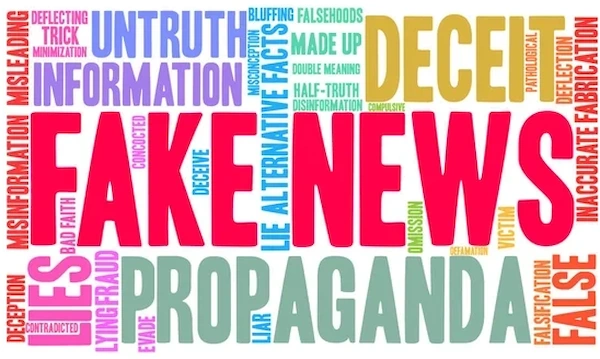
In a world dominated by consumerism and digital interactions, it’s easy to feel like life is one big illusion. The surfaces around us may seem real, but can they withstand deeper scrutiny? Many spiritual philosophies assert that true fulfillment isn’t found in the material but within our spiritual depths. Let’s explore this captivating idea.
Understanding Illusion: The Concept of Maya
The concept of illusion, particularly as articulated through the lens of Eastern philosophy, invites a profound exploration into the nature of reality and perception. Central to this discourse is the term “Maya”, which originates from Sanskrit and is often translated as “illusion” or “magic.” In various spiritual traditions, especially within Hinduism and Buddhism, Maya represents the deceptive nature of the material world, suggesting that what we perceive with our senses may not reflect ultimate truth.
Maya in Eastern Philosophy
In Hindu philosophy, particularly in Advaita Vedanta, Maya is described as the cosmic illusion that veils the true nature of reality (Brahman). According to this perspective, individuals are trapped in a cycle of ignorance (Avidya) that prevents them from recognizing their unity with Brahman. The material world—characterized by change, duality, and impermanence—is seen as a projection of this illusion. As articulated by philosopher Adi Shankaracharya, liberation (Moksha) comes from transcending Maya through knowledge (Jnana) and realization of one’s true self (Atman).
Similarly, in Buddhism, the concept of Maya is intertwined with the idea of “samsara”, or the cycle of birth and rebirth driven by desire and attachment. The Buddha taught that clinging to worldly phenomena leads to suffering (Dukkha), emphasizing that enlightenment involves seeing through these illusions to attain Nirvana—a state beyond suffering and individual existence.
Modern Interpretations of Maya
Today, the concept of illusion has found new life in psychological and philosophical discussions. The “illusory truth effect” studies how repetition influences belief, showing that repeated lies can create perceived truths. These insights echo the ancient warnings about fleeting and deceptive worldly experiences. Moreover, postmodern thinkers like Michel Foucault argue that power dynamics shape knowledge and truth in society. This aligns with the idea that what we perceive as reality is often constructed through cultural narratives rather than objective truths.
The Earthly World as a Scam
Could it be that our tangible surroundings trick us into believing they hold the key to happiness? Critics argue that societal constructs, like capitalism, are elaborate deceptions leading us away from inner peace.
- Philosophical Materialism: Philosophers such as Karl Marx critiqued capitalism for promoting alienation—where individuals become estranged from their labor, products, and ultimately themselves. This alienation fosters a sense of emptiness despite material abundance.
- Psychological Perspectives: Research in positive psychology indicates that intrinsic motivations—such as personal growth and connection—are more fulfilling than extrinsic rewards associated with consumer goods. The hedonic treadmill theory suggests that people quickly adapt to new possessions, leading them back to their baseline level of happiness.
- Cultural Critique: Cultural critics like Thorstein Veblen have examined how consumer culture promotes conspicuous consumption—a desire to display wealth rather than fulfill genuine needs. This behavior reinforces social hierarchies based on material possessions rather than character or virtue.
Consumerism and the Illusion of Happiness
Consumer culture relentlessly feeds the belief that happiness is just a purchase away. This illusion keeps societies in a perpetual cycle of desire and acquisition, leaving true contentment unnoticed. A life stockpiled with material goods doesn’t guarantee fulfillment, detracting from personal spiritual growth. Philosophers like Jean Baudrillard argue that consumer society creates hyperreality—a condition where distinctions between reality and simulation blur, leading people to derive meaning from artificial constructs rather than authentic experiences.
- The Role of Advertising: Advertising creates artificial needs by associating products with emotions or lifestyles. This manipulation fosters a belief that fulfillment lies outside oneself rather than within one’s intrinsic qualities or relationships.
- Societal Expectations: Societal norms dictate success through material accumulation, leading individuals to measure their worth against external standards rather than personal values or aspirations.
The Role of Social Media in Perception
Social media is a modern tapestry of illusions, portraying curated realities that skew our own perceptions and priorities. It often sets unattainable standards, leaving individuals feeling inadequate. This dynamic creates distractions from the genuine quest for spiritual awakening and truth.
- FOMO (Fear Of Missing Out): Social media exacerbates feelings of inadequacy through constant exposure to others’ highlight reels—leading users to believe they are missing out on experiences or happiness.
- Echo Chambers: Algorithms create echo chambers where users are exposed primarily to views aligning with their own beliefs—reinforcing illusions rather than challenging perceptions or encouraging critical thinking.
- Mental Health Impacts: Studies indicate correlations between heavy social media use and increased anxiety or depression due to unrealistic comparisons and social pressures.
The Search for Truth Within
Despite external deceptions, many believe that the path to truth lies inward. By exploring our spiritual depths, we can unveil the realities often masked by the physical world.
- Mindfulness Practices: Mindfulness meditation encourages present-moment awareness without judgment, allowing individuals to observe thoughts without attachment—a practice rooted in both Buddhist philosophy and modern psychological techniques aimed at reducing stress.
- Journaling & Reflection: Engaging in reflective practices such as journaling can help individuals articulate their thoughts and feelings, fostering greater self-awareness and clarity regarding personal values versus societal expectations.
- Therapeutic Approaches: Therapeutic modalities like Cognitive Behavioral Therapy (CBT) encourage individuals to challenge distorted beliefs about themselves influenced by external pressures—promoting healthier self-perceptions grounded in reality rather than illusion.
Meditation and Inner Exploration
Practices like meditation offer gateways into our inner selves. By focusing on the breath and silencing the mind, individuals can peel back layers of societal constructs, connecting with the fundamental truths that reside within.
- Neuroscientific Insights: Research shows that meditation can alter brain structures associated with emotional regulation, enhancing resilience against stressors related to consumer culture’s demands.
- Spiritual Awakening: Many practitioners report profound experiences during meditation where they feel connected to something greater than themselves—a realization echoing ancient teachings about unity beyond individual identities shaped by societal constructs.
The Role of Spiritual Communities
Connecting with spiritual communities can strengthen individual journeys. These groups offer support and insight, reinforcing one’s resolve to seek truth beyond the physical and illusory.
- Shared Wisdom & Experience: These communities foster environments where shared experiences lead to collective learning—encouraging members to explore spirituality beyond material concerns.
- Accountability & Growth: Being part of a community offers accountability for personal growth journeys while providing encouragement during challenging times when illusions may seem overwhelming.
- Rituals & Practices: Engaging in communal rituals reinforces connections among members while grounding them in shared values centered around spiritual exploration rather than material accumulation.
Conclusion
In a world obsessed with the tangible, it’s crucial to ask ourselves: Are we living in alignment with true purpose, or are we trapped in a web of illusions? By shifting focus inward, we embark on a journey not just to understand the world but to transcend its limitations. Only by seeking truth within can we see beyond the illusions that surround us, finding enduring peace at our core.
Reflect on your perceptions. Are they your own, or have they been shaped by a world that’s more illusory than it appears? The journey to self-awareness is a powerful step toward unraveling the great scam of the earthly world.
ARE YOU A MATERIALIST/CONSUMERIST PERSON?
Let’s examine your relationship with money and material possessions, as well as your broader concept of having. Would you be able to conceive of a life that is not based on making purchases and acquiring items?
Read the following sentences and select the ones you agree with and find most meaningful.
Count the number of selected boxes and read the associated profile.
0: You are not materialist and consumerist at all
1-2: You are hardly materialist and consumerist
3-4: You are quite materialist and consumerist
5-6: You are extremely materialist and consumerist
Further details on being materialistic
ARE YOU LIVING IMMERSED IN DUALITY?
From a philosophical standpoint, the concept of duality pertains to the notion of two fundamental and opposing principles that coexist. These principles may be exemplified by the dichotomy of the mind and the body, the antithesis of good and evil, or the opposition of reason and emotion. This duality gives rise to questions concerning the nature of reality and existence, and thus to debates on whether these opposites are truly separate or interconnected aspects of a unified whole. This dichotomy gives rise to questions concerning the nature of reality and existence, and thus to debates regarding the extent to which these opposites are genuinely separate entities or interconnected aspects of a unified whole. From a spiritual perspective, duality is often regarded as an illusion that diverts individuals from attaining oneness with the universe. Many spiritual traditions encourage the transcendence of this dualistic mode of thought in order to achieve enlightenment or a heightened state of consciousness.
Read the statements below and select those that resonate with you.
Note the number of selected boxes and see the associated profile.
0: Duality doesn’t really belong to you
1-2: There is a little bit of Duality in you
3-4: You are heavily influenced by Duality
5-6: You are fully immersed in Duality
More details on living immersed in duality




